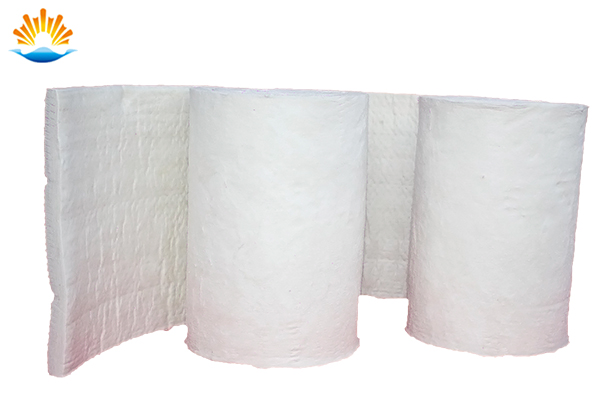Product
Fused Cast AZS Block
AZS Casting Type
AZS Ramming Materials
Fused Cast AZS TY-AZS41
Fused Cast AZS TY-AZS36
Fused Cast AZS TY-AZS33
Fused Cast Alumina Block
Fused cast Alumina Block TY-H
Fused cast Alumina Block TY-A
Fused cast Alumina Block TY-M
Fused Cast High Zirconia Block
Fused Cast Skid Rail Block
Silica brick
Magnesia Series Brick
Bonded Refractory Block
High alumina And Fire clay bricks
Insulation Series Brick
Ceramic Fiber Products
Contact Details
- 0086 371 63838939
- 0086 371 63835539
- sales@sunriserefr.com
- tkfanyi
- No.36 Fengchan Road, Zhengzhou City
Solutions
What is Ceramic Fiber Blanket
- More related products
- Fused Cast AZS Block
- Fused Cast Alumina Block
- Fused Cast High Zirconia Block
- Fused Cast Skid Rail Block
Ceramic Fiber Blanket, also known as aluminum silicate fiber blanket, is a kind of white high temperature insulation material that mainly consists of Al2O3 and SiO2. It has great insulating performance and stability both in high and low temperature, thus is widely used in insulating pipelines.


Ceramic fiber blanket is made of binders, additives and ceramic fiber by pulping, vacuum forming, drying and curing.
Ceramic Fiber Blanket can be divided into two types: blown ceramic fiber blanket and spun ceramic fiber blanket. It is made of special aluminum silicate ceramic fiber by double sides mechanically needling. Double sides mechanically needling can improve its interleaving degree, delamination resistance, strength and surface integrity.
Spun ceramic fiber blanket has better insulating performance better than blown ceramic fiber blanket because it has longer fiber and lower thermal conductivity.
It does not contain any organic binding agent, in order to ensure that it has good stability in both high and low temperature conditions.
It has excellent resistance to tensile stress and can resist temperature range 950-1400℃. It has good thermal shock resistance and corrosion resistance. It is commonly used acid and alkali and can maintain good tensile strength, toughness and fiber structure for a long time. It is flexible and easy to cut or install.
In general, ceramic fiber blanket has a density of 128 kg/m3, which is the most common ceramic fiber blanket and has the largest demand on the market. The highest density is 160kg/m3. It is rarely on the market and needs to customize. There are also 64 kg/m3 and 96 kg/m3 ceramic fiber blankets.
When installing, ceramic fiber blanket should be cut with straightedge and sharp knives. Do not tear, trample and roll forcefully. Avoid ingress of rainwater.
Ceramic Fiber Blanket is used as high temperature insulation materials in spaceflight, steel and Petrifaction industry. It is widely used in military equipment, furnaces, kilns, generators, reformers, boilers, nuclear and power plants and other high temperature equipment.
Read more
Need more information? Drop us a line
For more information on any of our products please get in touch using the form below. One of our sales team will respond to your enquiry as soon as possible.
Copyright © 2014 Zhengzhou Sunrise Refractory Co., Ltd. Site Index Product IndexSitemap









